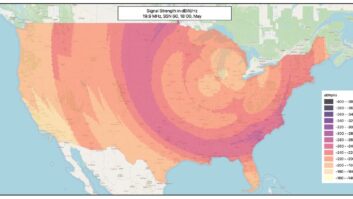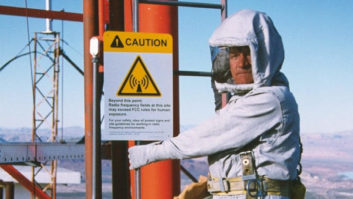New rules for tower locations
Apr 1, 2005 12:00 PM, By Harry Martin
Effective March 7 the FCC adopted new rules implementing the Nationwide Programmatic Agreement (NPA). The NPA is an accord hammered out by representatives of the FCC, the Advisory Council on Historic Preservation and the National Conference of State Historical Preservation Officers. These folks, along with representatives of Indian tribes and potentially affected tower managers and owners, formed a working group to try to streamline compliance with the National Historic Preservation Act.
The Historic Preservation Act requires federal agencies, including the FCC, to take into account the potential effect of any of their undertakings on registered historical properties or properties eligible for registration. The FCC and potential tower builders had been struggling with this requirement for years because the so-called SHPOs and THPOs (state and tribal historical preservation officers) had experienced delays in completing the necessary consultation that had to occur before the FCC could sign off on a tower construction with historic implications. The NPA is intended to ease that backlog by clarifying the obligations of the various parties to the process.
There are several useful elements in the NPA. It clarifies the circumstances under which a modification to an existing tower structure must undergo new historic preservation review. Because the criteria for a substantial modification of a tower are now clearly defined, a tower owner can be sure what sorts of changes will trigger regulatory delay. There are categorical exclusions from the purview of the NPA for qualifying enhancements to existing towers, replacement of towers, the use of temporary facilities, construction on industrial and commercial properties, or in utility or transportation corridors or SHPO/THPO-designated areas.
The NPA defines far more precisely the zones around the tower within which a tower builder must assess adverse historical effects. The NPA makes it clear that a tower proponent does not have to determine whether structures in the protected zone are eligible for inclusion in the Historic Register even if they are not in the register already. Clarifying these and other points and standardizing the process with uniform forms and procedures will alleviate many proposed towers from historic consideration at all and will speed the disposition of applications for other towers that may or may not adversely affect historic properties.
Perhaps the most onerous requirement found in the NPA is the obligation to have a government-certified expert proclaim that the proposed construction does not require a field survey to ensure that no historical or archeological treasure will be disturbed by the construction. In other words, the default requirement would routinely call for such a site excavation–unless you can get an expert to absolve you and your site.
Finer points
There are exceptions to this requirement, but they are somewhat narrow. You do not need the expert’s blessing as long as (1) geomorphological characteristics make it clear that there could be nothing under the ground (e.g., you’re building on bedrock) or (2) the ground beneath the proposed structure has already been disturbed to a level two feet below the proposed construction. In any other situation you have to actually perform the field survey or get an expert to say that there is no reason to think that a field survey would be required. This is true even if you’re planning to build in the middle of uninhabited woods or fields–because there could have been colonials or Indians on the site centuries ago and the site must not be irrevocably disturbed without the blessing of an expert.
These new requirements immediately affect the contents of FCC applications for construction permits. The environmental worksheets included in the instructions to Form 301 already require applicants to take historic preservation into account in certifying that the proposal complies with environmental standards.
Dateline:
June 1, 2005, is the deadline for stations in Arizona, Idaho, New Mexico, Nevada, Utah and Wyoming to file their 2005 renewal applications, biennial ownership reports and EEO program reports.
June 1 also is the date stations in California must begin broadcasting their renewal pre-filing announcements.
Martin is president of the Federal Communications Bar Association and a member of Fletcher, Heald and Hildreth, Arlington, VA. E-mail[email protected].











